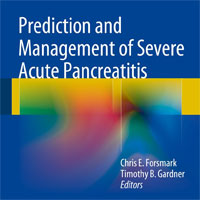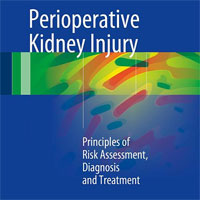Tag: treatment
Fluid Resuscitation with PPD Attenuates Crush Injury-related AKI and Improves Survival
In-hospital renal replacement therapy (RRT) is widely used for the treatments of acute kidney injury (AKI) in crush injury (CI) victims. This study was designed to investigate whether preventive peritoneal dialysis (PPD)... read more
Speedy sepsis care slows in-hospital mortality
Sepsis and septic shock patients treated within 3 hours had lower in-hospital mortality rates than those treated between hours 3 and 12, based on data from nearly 50,000 adult patients. The findings were presented at an international... read more
Ideas for Future Intensive Care
Progress toward determining the true worth of ongoing practices or value of recent innovations can be glacially slow when we insist on following the conventional stepwise scientific pathway. Moreover, a widely accepted but... read more
Withdraw Life-Sustaining Treatments for Patients with Severe TBI
The decision to withdraw life support from patients with severe brain injuries is very difficult. In a study conducted in Canadian Medical Association Journal, critical care physicians were asked about the decision-making... read more
Acute Kidney Injury in Postoperative Shock
Is hyperoncotic albumin administration an unrecognized resuscitation risk factor? The use of hyperoncotic albumin (HA) for shock resuscitation is controversial given concerns about its cost, effectiveness, and potential for... read more
Sepsis: Personalization vs. Protocolization?
The history of intensive care has been littered with too many false dawns. Old management dogma, now derided, have been replaced by new and equally resolute convictions, many of which will, in time, undoubtedly follow a similar... read more
The Hospitalist Role in Treating Opioid Use Disorder
Opioid use disorder, like many of the other conditions we see, is a chronic relapsing remitting medical disease and a risk factor for premature mortality. When a patient with diabetes is admitted with cellulitis, we might... read more
Manual of Traumatic Brain Injury: Assessment and Management
Now completely revised and updated, Manual of Traumatic Brain Injury: Assessment and Management, Second Edition is a comprehensive evidence-based guide to brain injury diagnosis, treatment, and recovery, delivered in a succinct... read more

Practical Management of Invasive Candidiasis in Critically Ill Patients
The heterogeneity of this patient population necessitated the creation of a mixed working group comprising experts in clinical microbiology, infectious diseases and intensive care medicine, all chosen on the basis of their... read more
Intravenous Lidocaine Does Not Improve Neurologic Outcomes after Cardiac Surgery
Intravenous lidocaine administered during and after cardiac surgery did not reduce postoperative cognitive decline at 6 weeks. Among the 420 allocated subjects who returned for 6-week follow-up, there was no difference in... read more
Gut Dysmotility in the ICU
Off-label metoclopramide and/or erythromycin administration are effective for upper gastrointestinal dysmotility but have adverse effects. Trials of alternative or novel promotility drugs have not demonstrated superiority... read more
Prediction and Management of Severe Acute Pancreatitis
This volume provides a comprehensive summary of the field, with expert recommendations on prediction and management. It details the recent consensus guidelines (2012) updating the definition of pancreatitis and its complications.... read more

How to Deal with Severe Acute Pancreatitis in the Critically Ill
Management of severe acute pancreatitis (SAP) is multimodal with emphasis on monitoring, adequate fluid resuscitation, avoiding prophylactic use of antibiotics, cause-directed procedures or treatment, and organ support. There... read more
Oxygen Use, Lower Lung Function Seen as Predictors of Death or Transplant in IPF
The use of oxygen at rest is associated with a greater likelihood of death or lung transplant in people with idiopathic pulmonary fibrosis (IPF), a study shows. The results also showed that lower lung function at the start... read more
Perioperative Kidney Injury: Principles of Risk Assessment, Diagnosis and Treatment
The kidneys participate in all vital processes of the body to maintain overall homeostasis and health. When kidneys are injured during surgical interventions, metabolic and hemodynamic control is disrupted, leading to dysfunction... read more

What influences critical care doctors in withdrawing life support for patients with brain injury?
Decisions to withdraw life support treatments in critically ill patients with severe brain injury are complicated, are based on many factors, and are usually made by critical care physicians and families in the intensive... read more
Early Protocolized Versus Usual Care Rehabilitation for Pediatric Neurocritical Care Patients
A protocol for early personalized rehabilitation by physical therapy, occupational therapy, and speech and language therapy in pediatric neurocritical care patients could be safely implemented and led to more ICU-based treatment... read more
Serotonin Syndrome
Serotonin syndromes comes up a lot in critical care medicine. Sometimes we are admitting patients because of a primary diagnosis of serotonin syndrome. Other times we are afraid of causing serotonin syndrome ourselves, due... read more
Antibiotics for Sepsis
Antibiotics for Sepsis - Does Each Hour Really Count? Or is it Incestuous Amplification? - by Prof Mervyn Singer "Each hour's delay in initiating antibiotics costs lives" is a doctrine that has attained quasi religious status.... read more
Angiotensin II For Septic Shock Treatment
Angiotensin II has been studied for many years and has consistently shown to increase MAP. This medication adds a new mechanism of action to the vasopressor arsenal that is already used for septic shock. Angiotensin II should... read more
Pretreating red blood cells with nitric oxide may reduce side effect linked to transfusions
A new treatment may diminish a dangerous side effect associated with transfusions of red blood cells (RBCs) known as pulmonary hypertension, an elevated blood pressure in the lungs and heart that can lead to heart failure.... read more
Reversal of Oral Anticoagulation in Patients with Acute Intracerebral Hemorrhage
In light of an aging population with increased cardiovascular comorbidity, the use of oral anticoagulation (OAC) is steadily expanding. A variety of pharmacological alternatives to vitamin K antagonists (VKA) have emerged... read more









